Even though the 2020 Census already began in some parts of the country, we are one month away from households nationwide receiving official Census Bureau invitations to participate. To help ensure that children age four and under are properly counted, we've compiled news updates from the month of February and the latest resources that will help you prepare:
February News & Resources about the 2020 Census
Topics: Family & Community Engagement, Policy & Advocacy
Continue ReadingResearch Round Up: Workforce
The health status of the early care and education workforce in the USA: A scoping review of evidence and current practice
Lessard, L.M., Wilkins, K., Rose-Malm, J., and Mazzocchi, M.C. Public Health Reviews (January 2020).
Background: Ten million young children in the U.S. are enrolled in an early care and education (ECE) program such as child care, Head Start or pre-kindergarten. These programs would not function without a workforce of roughly two million ECE teachers and support staff. The ECE workforce is made up almost entirely of women, disproportionately women of color, who earn low wages and receive few benefits. These factors suggest that the ECE workforce may be at a high risk for chronic diseases, but we know little about individuals’ health status. This paper looks at what information we have about the health of the workforce and what types of programs are being used to improve ECE workers’ health.
Topics: Workforce, Professional Development
Continue ReadingHealth Resource Spotlight: Child Development
The Problem
Providers play a critical role in helping identify children with developmental concerns – if they have the right knowledge and training.
Topics: Health & Safety
Continue ReadingFY21 White House Budget Proposal
In response to the President’s Budget for Fiscal Year (FY) 2021, Child Care Aware® of America (CCAoA) Executive Director Dr. Lynette M. Fraga released the following statement:
“The President’s FY 2021 Budget falls well short of meeting families’ needs. The proposal lacks the robust, long-term investment the child care system needs to ensure our children thrive. In addition, the very same families who struggle to access child care, are hit hard by the proposed Budget’s plans to cut or weaken the Supplemental Nutrition Assistance Program (SNAP), Temporary Assistance for Needy Families (TANF), Medicaid, the Social Services Block Grant (SSBG), and other critical safety net programs.
Topics: Family & Community Engagement, Policy & Advocacy
Continue ReadingYour On-the-Go Consumer Education Brochure Suite
The process of searching for child care is undeniably one of the most difficult processes for families with young children to navigate. Child Care Resource and Referral (CCR&R) agencies play a critical role in partnering with families to ensure they have information to make the right child care choice for their family. We are excited to share with you a newly refreshed suite of on-the-go child care information brochures that you can use to bolster your own consumer education offerings.
Topics: Business Operations for CCR&Rs, Family & Community Engagement, En español
Continue ReadingA New PD Program that Improves Quality in Infant & Toddler Classrooms
In 2017, the Early Learning Coalition of Orange County (ELOC), the not-for-profit agency tasked by the state of Florida to ensure young children’s school readiness, which serves families and early childhood programs in the greater Orlando community, launched a new professional development (PD) program called LENA Grow as a way to increase quality in infant and toddler classrooms.
Topics: Professional Development
Continue Reading








